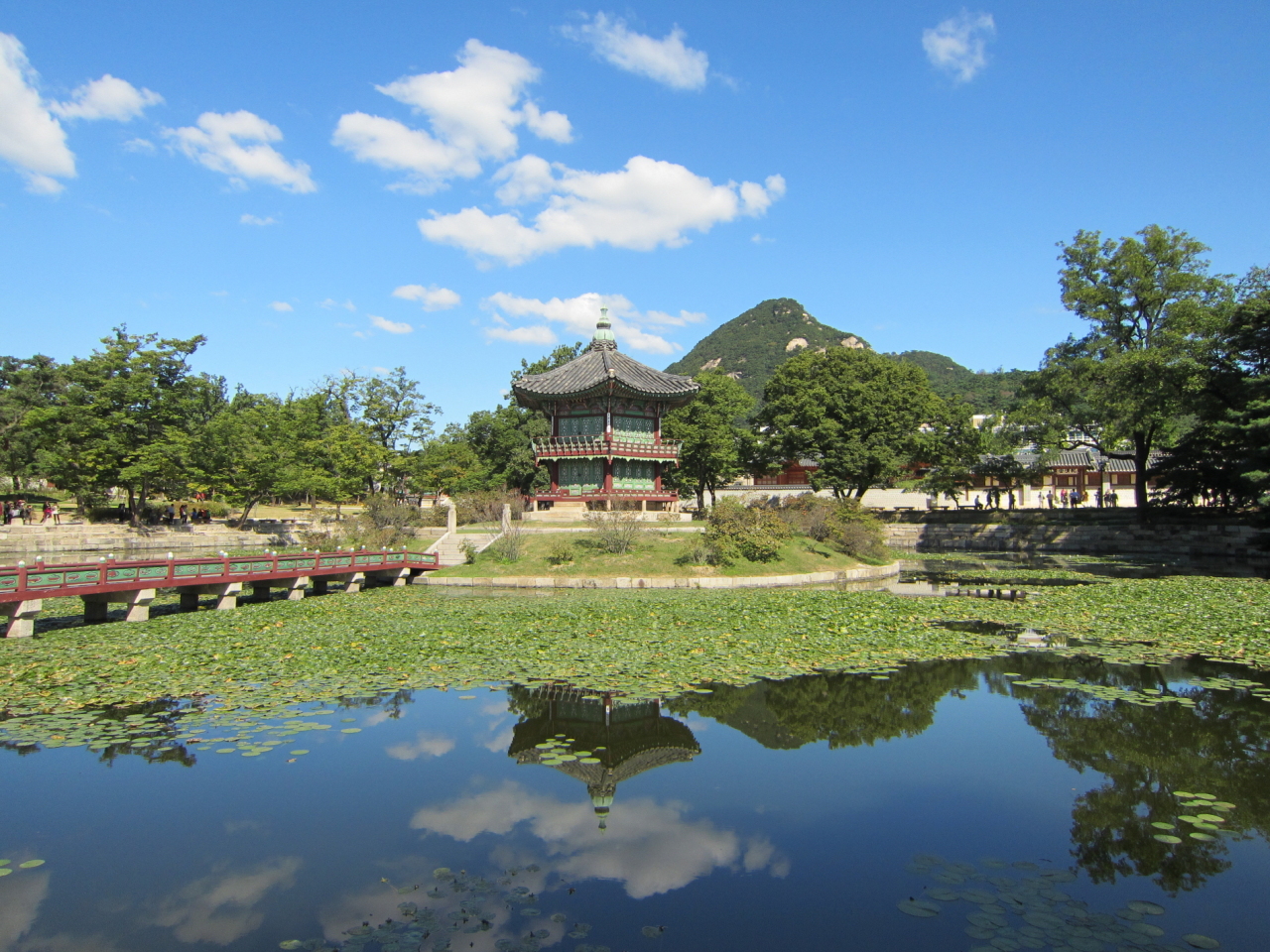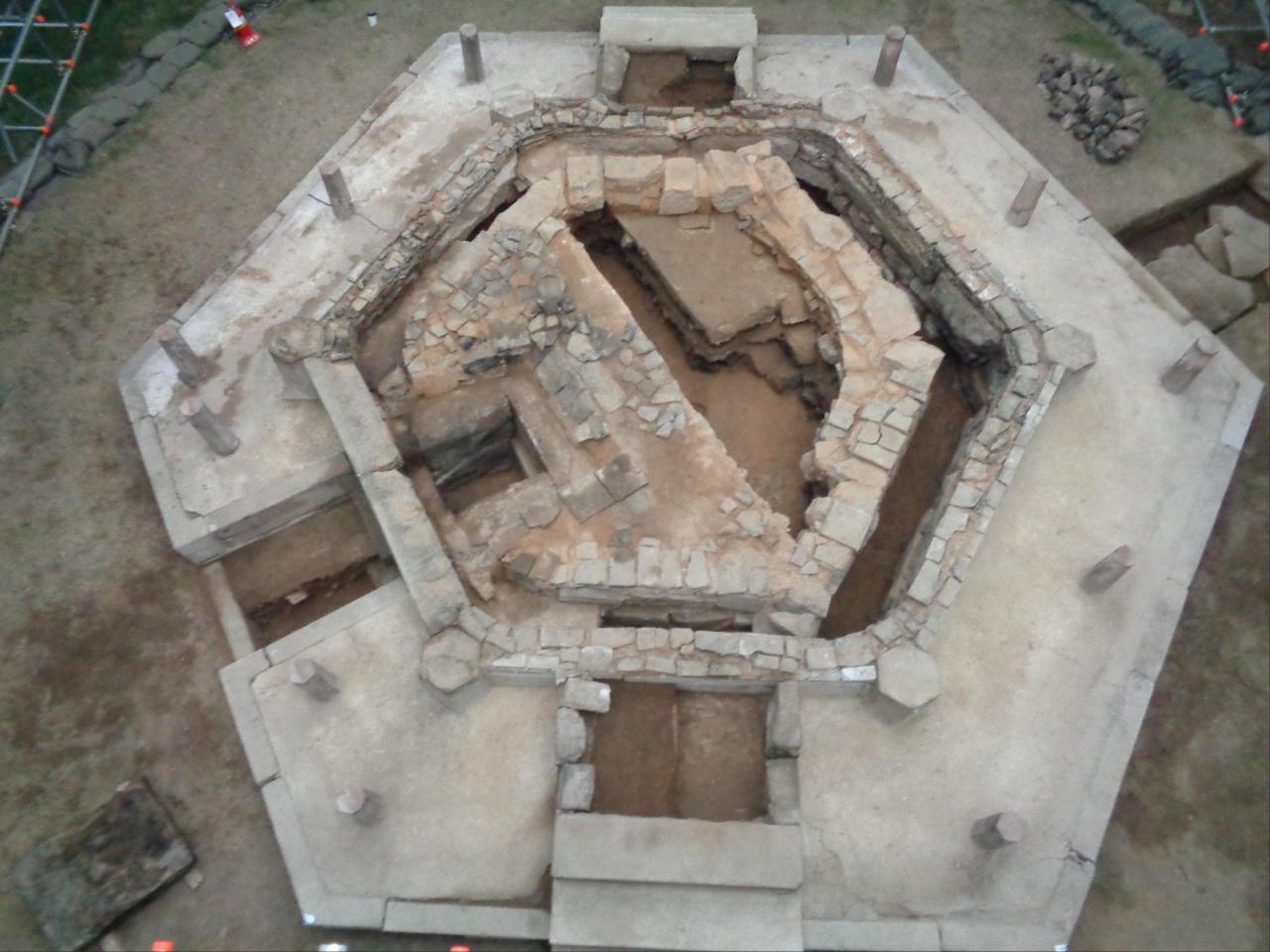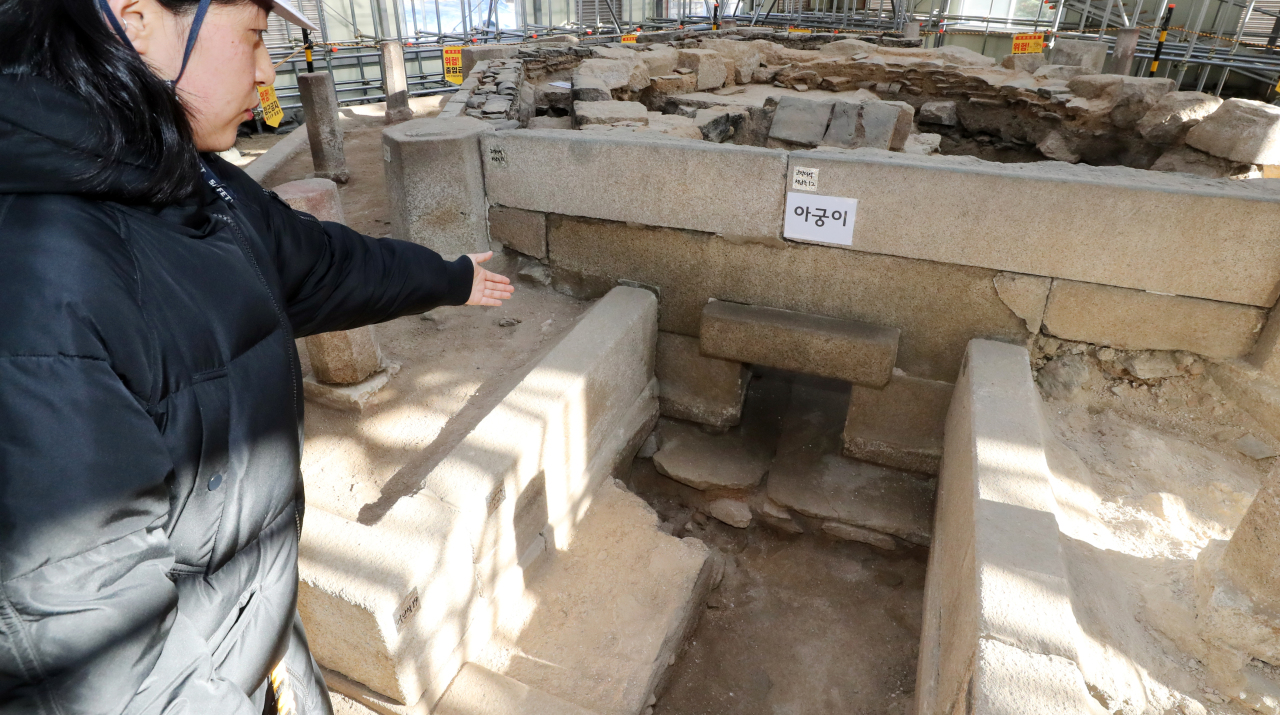Designated Treasure No. 1761, Hyangwonjeong -- a two-story hexagonal pavilion on a small artificial island in the middle of a pond on the northern grounds of Gyeongbokgung -- was built by King Gojong around the time of the construction of the royal couple’s private quarters, between 1867 and 1873.

The Cultural Heritage Administration of Korea on Wednesday unveiled the unique floor heating system found at the pavilion.
Korea’s traditional heating system ondol generates warmth using direct heat from wood smoke that travels underneath the floor. Pavilions often come with ondol systems.
The uniqueness of the heating system found in Hyangwonjeong lies in how the smoke travels along the sides of the first floor, not through the center.
It is the first-ever pavilion to have such an ondol system, according to the Ganghwa National Research Institute of Cultural Heritage, a subsidiary of the Cultural Heritage Administration responsible for the building’s repair work.


Residential buildings usually have ondol systems that allow the smoke to travel through the center, keeping the entire floor warm. Given that Hyangwonjeong has its heating system around the sides, the pavilion is assumed to be a temporary resting place that the royal family used occasionally, according to Bae Byeong-seon, chief researcher of the Ganghwa National Research Institute of Cultural Heritage.
Bae added that the smoke path might have been placed along the sides because of concerns that the artificial island in the middle of the pond might be weakened if empty channels were placed at the center of the structure.
Repair works on Hyangwonjeong began in May 2017, after several safety tests showed the pavilion to be leaning to one side by two degrees.
Several changes will be made to the pavilion during the repair. The original shape of the ornamentation on the top of Hyangwonjeong will be restored as per a 19th century photograph provided by Karl Ivanovich Weber, a Russian diplomat and a personal friend of King Gojong. Fences that encircle the pavilion will also be reinstalled in the shape found in the same photograph.
The repair project will also see the relocation of the bridge that connects Hyangwonjeong to the land. Chwihyanggyo was destroyed during the Korean War and rebuilt in 1953 at a location south of its original site.
While restoring the original shape of Hyangwonjeong, the Cultural Heritage Administration will use the latest technology to prevent the soil from being compromised in the future -- by the water pressure around it.
The repair works for Hyangwonjeong, a popular spot in the palace, will be completed in June next year, and it will open to the public later that month.
A total of 1.2 billion won is expected to be spent on the restoration project.
By Shim Woo-hyun (ws@heraldcorp.com)









![[Kim Seong-kon] Democracy and the future of South Korea](http://res.heraldm.com/phpwas/restmb_idxmake.php?idx=644&simg=/content/image/2024/04/16/20240416050802_0.jpg&u=)








![[KH Explains] Hyundai's full hybrid edge to pay off amid slow transition to pure EVs](http://res.heraldm.com/phpwas/restmb_idxmake.php?idx=652&simg=/content/image/2024/04/18/20240418050645_0.jpg&u=20240418181020)

![[Today’s K-pop] Zico drops snippet of collaboration with Jennie](http://res.heraldm.com/phpwas/restmb_idxmake.php?idx=642&simg=/content/image/2024/04/18/20240418050702_0.jpg&u=)